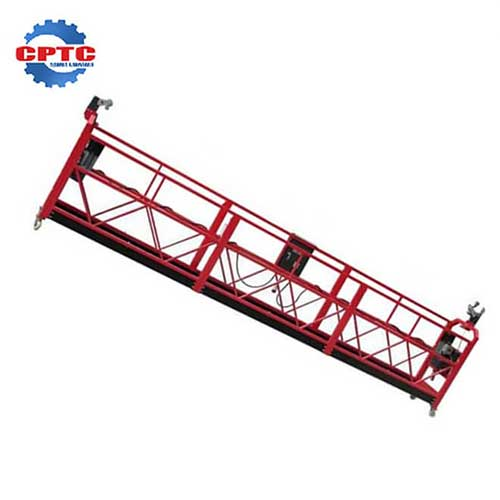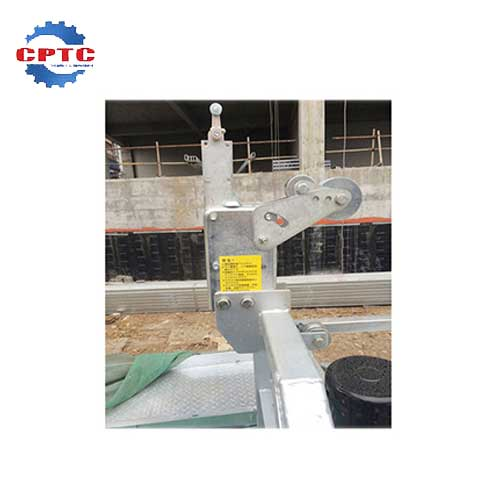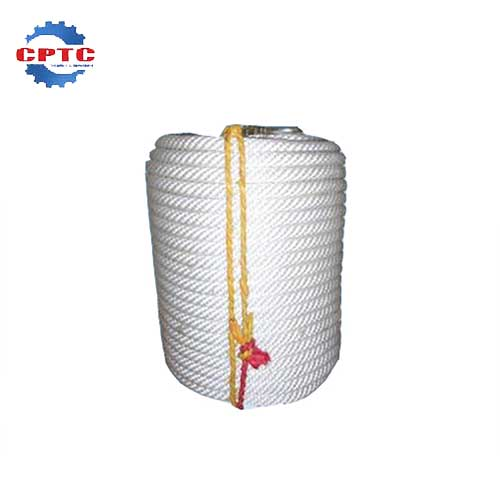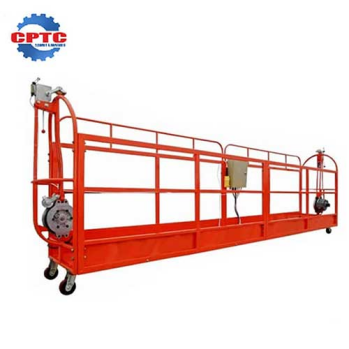High-altitude construction and maintenance projects demand precision, safety, and efficiency. A critical decision project managers face is choosing between electric suspended platforms and traditional suspended platforms. While both serve the same fundamental purpose—providing elevated access—their differences in cost, performance, and adaptability can make or break a project’s success.
This article compares electric and traditional systems across five critical factors, equipping you with data-driven insights to select the optimal solution for your needs.
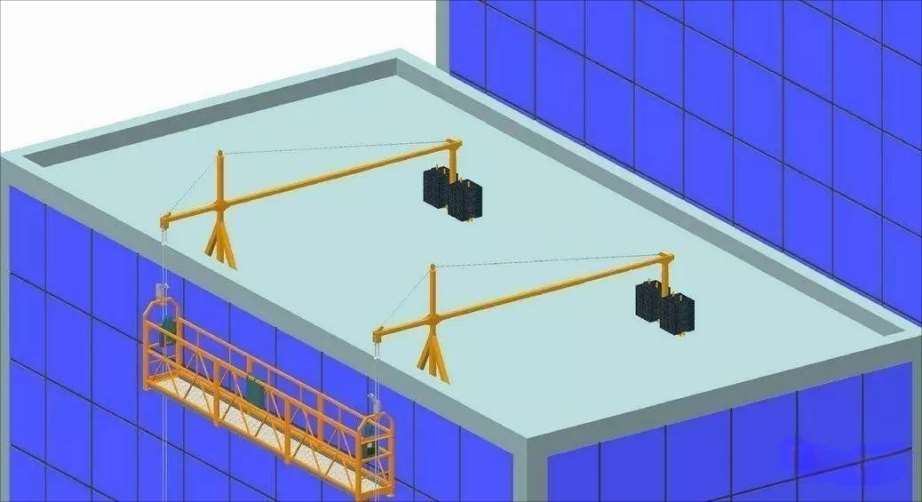
Understanding Electric and Traditional Suspended Platforms
Electric Suspended Platforms
Electric suspended platforms utilize motorized hoists to lift and lower the platform, allowing for smooth and controlled movement. These platforms are commonly used for high-rise construction, facade maintenance, and large-scale painting or renovation projects.
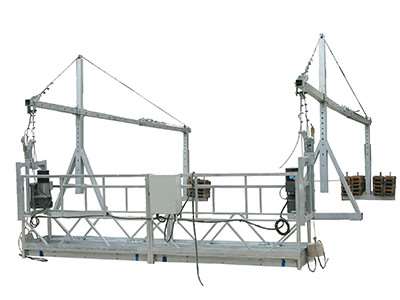
Key Features:
High efficiency: Automated operation reduces manual labor and increases productivity.
Enhanced safety: Equipped with emergency braking systems, overload protection, and safety locks.
Versatile applications: Suitable for high-altitude tasks such as window cleaning, bridge repairs, and skyscraper maintenance.
Traditional Suspended Platforms
Traditional suspended platforms, also known as manual or mechanically operated platforms, require workers to use a hand-operated winch or basic pulley system to raise and lower the platform. These are often used for smaller projects where automation is not necessary.
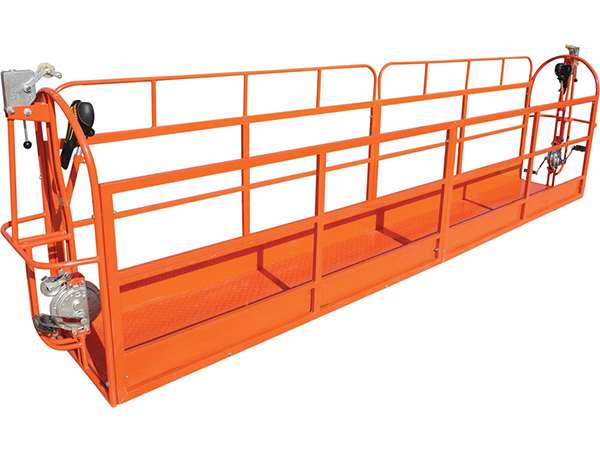
Key Features:
Lower initial cost: More affordable compared to electric platforms.
Simple operation: Requires less technical knowledge to operate.
Limited efficiency: Heavily reliant on human effort, making it less suitable for large-scale or long-duration tasks.
Electric vs. Traditional Suspended Platforms – Comparison Across 5 Key Factors
| Factor | Electric Suspended Platform | Traditional Suspended Platform |
| Cost | Higher initial cost, cost-effective long-term | Lower initial cost, higher long-term labor expenses |
| Work Efficiency | High efficiency, automated operation | Lower efficiency, manual operation |
| Safety & Compliance | Equipped with safety features, meets industry standards | Higher risk, relies on manual handling |
| Environmental Adaptability | Requires stable power supply | Can operate without electricity |
| Maintenance & Service Life | Requires regular maintenance, longer lifespan | Simpler maintenance, shorter lifespan |
Cost Analysis: Short-Term Budget vs. Long-Term Investment
Electric Suspended Platform: While the initial cost of purchasing or renting an electric suspended platform is higher, it proves to be more cost-effective over time due to increased productivity and reduced labor costs.
Traditional Suspended Platform: The lower upfront cost makes it attractive for short-term or small projects, but the increased reliance on manual labor can result in higher operational costs in the long run.
Verdict: If your project is short-term and budget-constrained, a traditional platform may be a better option. However, for long-term or high-frequency use, an electric platform is the better investment.
Work Efficiency & Precision
Electric Suspended Platform: Automation allows for precise height adjustments and consistent movement, leading to higher productivity.
Traditional Suspended Platform: Requires more effort and time to reach desired working heights, which can slow down the project.
Verdict: Electric platforms significantly outperform traditional ones in terms of efficiency and precision.
Safety & Compliance
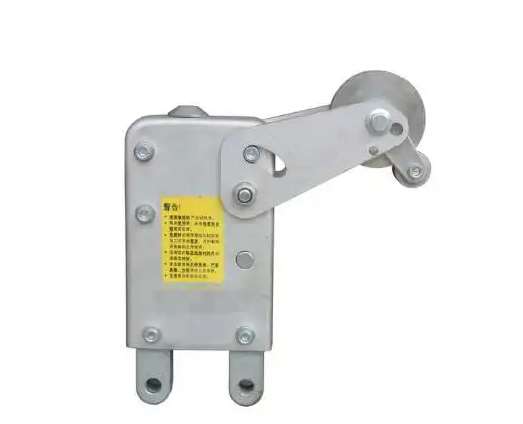
Electric Suspended Platform: Comes with built-in safety mechanisms such as emergency braking, overload protection, and anti-tilt devices, ensuring compliance with international safety standards.
Traditional Suspended Platform: Heavily relies on human control, increasing the risk of accidents due to improper handling.
Verdict: If safety is a primary concern, an electric platform is the superior choice.
Environmental Adaptability
Electric Suspended Platform: Requires a stable power source, which may not be available in all work environments.
Traditional Suspended Platform: Operates without electricity, making it more suitable for remote or off-grid locations.
Verdict: If your worksite lacks reliable electricity, a traditional platform may be more practical. Otherwise, an electric platform provides better overall performance.
Maintenance & Service Life
Electric Suspended Platform: Requires regular maintenance, including electrical inspections and motor servicing, but generally has a longer lifespan and higher reliability.
Traditional Suspended Platform: Simpler maintenance requirements but may wear out faster due to the strain of manual operation.
Verdict: Electric platforms last longer with proper maintenance, making them a better long-term investment.
How to Choose the Right Suspended Platform for Your Needs?
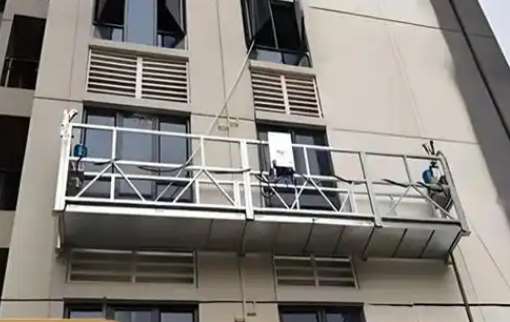
Assess Project Requirements
When selecting the right suspended platform, two key project factors should be evaluated: project scale and working height.
Project Scale:
Large-scale projects: High-rise construction, skyscraper maintenance, and large-scale facade work require electric suspended platforms due to their efficiency, stability, and safety features.
Small-scale projects: Short-term maintenance, low-rise building repairs, and temporary work are often more suited for traditional suspended platforms, which are cost-effective and easy to set up.
Working Height:
High-altitude work (above 50 meters / 164 feet): Electric suspended platforms are the preferred choice, as they provide precise control, stability, and reduced manual effort for higher elevations.
Low to mid-height work (below 50 meters / 164 feet): Traditional suspended platforms may be sufficient for low-rise buildings and short-term maintenance, where automation is not necessary.
Consider Environmental Factors
Evaluate the worksite conditions:
Power availability: If your project site has a reliable power source, electric platforms provide superior performance.
Weather and external conditions: Electric platforms may have weather-resistant features, but if operating in extreme conditions without electricity, a traditional platform might be more suitable.
Budget Considerations
Short-term projects with limited budgets: Traditional platforms may be more economical.
Long-term investments: Electric platforms offer better efficiency, safety, and durability, making them a more cost-effective choice over time.
Conclusion
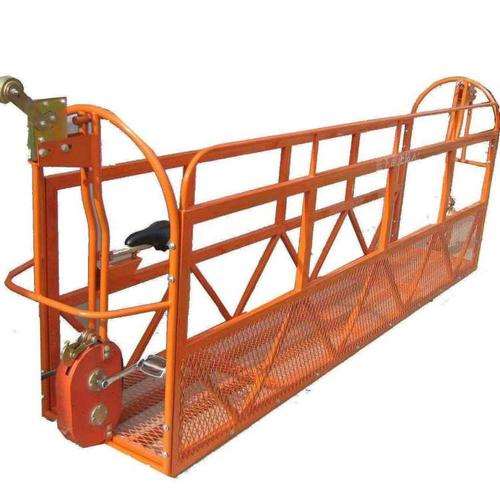
Choosing between an electric and a traditional suspended platform depends on your specific project requirements, budget, and environmental conditions.
Choose an electric suspended platform if you prioritize efficiency, safety, and long-term cost-effectiveness. It is the ideal choice for large-scale, high-altitude, and frequent-use projects.
Choose a traditional suspended platform if you have a limited budget, require a simple setup, or are working in an environment without reliable electricity.
If you need expert advice on selecting the right suspended platform for your project, feel free to contact a professional suspended platform supplier to explore available options that meet your specific requirements.
Related Products
ZLP Series Suspended Platform
Simple and quick installation
Multiple security measures
Stable and…
Suspended Platform Safety Lock
Easy to Operate and Use
Made…
Safety Rope
Lightweight and Portable
Durable and Long-lasting
Construction Platform
With a lightweight…

